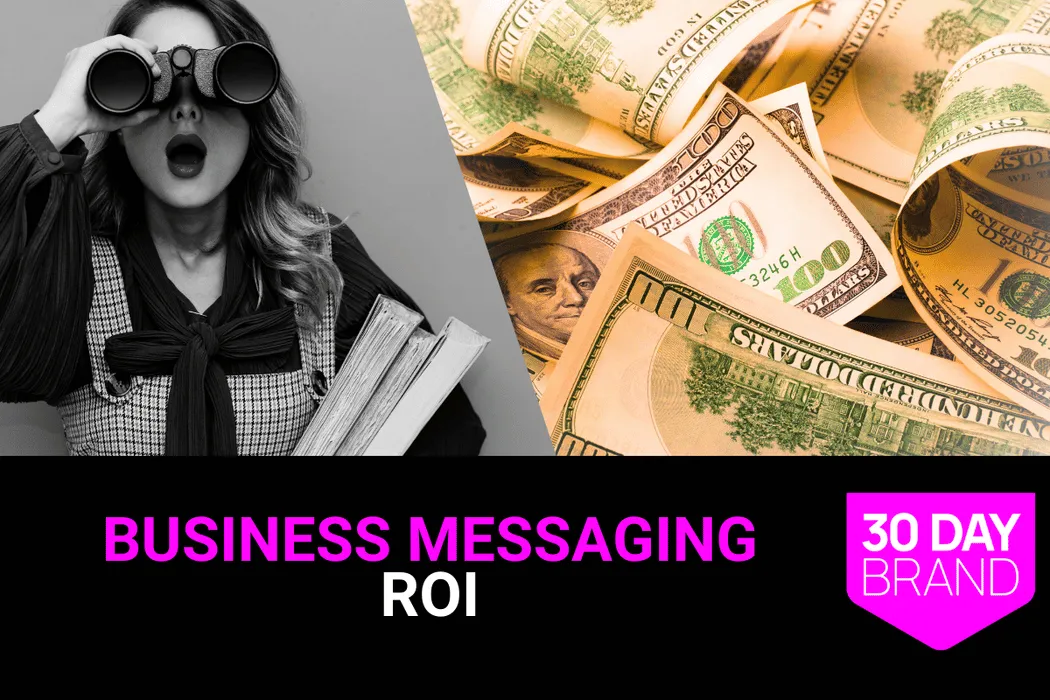
Business Messaging ROI: Measuring the Impact of Clear Communication
Quick Definition
Business Messaging ROI = The cold, hard, undeniable proof that your words are actually making you money. It’s the process of connecting your messaging efforts directly to your bottom line, so you can stop guessing and start knowing what works.
The Pain of “I Think It’s Working”
You've spent weeks, maybe even months, clarifying your message. You've workshopped your value proposition. You've A/B tested your homepage headline. You feel like it's working. But when your CEO asks you, "What's the ROI on all this messaging work?" you freeze. You start talking about “engagement” and “brand awareness,” but you can’t actually connect it to revenue. 68% of marketers say they struggle to prove the ROI of their efforts (HubSpot, 2024), and it’s because they’re not measuring the right things. You’re tired of justifying your work with fuzzy metrics. You’re frustrated that you can’t prove the value of what you know is a critical business function. It’s time to stop guessing and start measuring.
The Metrics That Matter: A No-Fluff Guide to Measuring Messaging ROI
Leading Indicators: The Early Warning System
These are the metrics that tell you if you’re on the right track. They don’t scream “ROI!” but they’re the first signs that your message is starting to resonate.
Website Bounce Rate: If your bounce rate is going down, it means your message is compelling enough to make people stick around. A lower bounce rate is a direct indicator that your message is clear and relevant.
Time on Page: If people are spending more time on your key pages, it means they’re actually reading your message. This is a strong sign that you’ve moved from confusing to compelling.
Conversion Rate (Micro-conversions): This isn’t about the final sale; it’s about the small steps. Are more people downloading your white paper? Signing up for your webinar? These are the small “yeses” that lead to the big “yes.”
Lead Quality: Are your sales reps complaining less? Are they having better conversations with more qualified leads? This is a direct result of clearer messaging attracting the right people.
Lagging Indicators: The Bottom-Line Proof
These are the metrics that your CEO actually cares about. They take longer to show up, but they’re the undeniable proof that your messaging is working.
Customer Acquisition Cost (CAC): If your messaging is clearer, you should be spending less to acquire a new customer. Your CAC should be going down.
Sales Cycle Length: A clear message should shorten your sales cycle. Your prospects should understand your value faster, which means they should be making a decision faster.
Close Rate: If your sales team is closing a higher percentage of their deals, it’s a strong sign that your messaging is doing the heavy lifting of pre-selling your prospects.
Customer Lifetime Value (LTV): A clear message doesn’t just attract new customers; it attracts the right customers. The right customers are more likely to stick around, which means your LTV should be going up.
How to Actually Calculate Messaging ROI: A Simple Formula
This is where the rubber meets the road. It’s not as complicated as you think. Here’s a simple formula you can use:
(Return from Messaging - Cost of Messaging) / Cost of Messaging = Messaging ROI
Step 1: Calculate the Return from Messaging
This is the tricky part, but it’s not impossible. You need to isolate the impact of your messaging. Here’s how:
Choose a specific campaign. Don't try to measure the ROI of your entire messaging strategy at once. Start with a specific campaign, like the launch of a new product or a new lead generation campaign using your business messaging framework.
Set a baseline. What were your key metrics before you launched the new messaging? What was your conversion rate? Your close rate? Your sales cycle length?
Measure the lift. After you launch the new messaging, measure the same metrics again. The difference is the lift from your new messaging.
Attribute a value to the lift. This is where you have to make some assumptions. For example, if your close rate went up by 10%, how much is that worth in new revenue? If your sales cycle got 2 weeks shorter, how much is that worth in saved time and resources?
Step 2: Calculate the Cost of Messaging
This is the easy part. What did you spend to create and launch the new messaging? This could include:
Your time (or your team’s time). Don’t forget to factor in the cost of your own salary.
Any freelance or agency fees.
Any tools or software you used.
Any ad spend.
Step 3: Do the Math
Once you have your return and your cost, just plug them into the formula. The result will be a percentage that represents your messaging ROI.
Quick Implementation Guide
Start here: Pick one metric to focus on. Don’t try to measure everything at once. Just pick one thing—like your website’s conversion rate—and focus on improving it with better messaging.
Then do this: Create a simple dashboard to track your key metrics. It doesn’t have to be fancy. Just a simple spreadsheet that you update every week.
Measure this: The conversation in your sales meetings. Are your prospects coming to the table with a better understanding of what you do? Are they asking smarter questions? That's the first sign that your messaging is having a real impact. For inspiration on what effective messaging looks like, check out these proven business messaging examples.
Key Statistics
68% of marketers say they struggle to prove the ROI of their efforts (HubSpot, 2024).
Companies with clear, consistent messaging see a 3.5x increase in revenue (Forrester, 2024).
A 10% improvement in message clarity can lead to a 5% increase in customer lifetime value (McKinsey, 2024).
FAQ
This seems like a lot of work. Is it really worth it?
Is it worth it to know if your marketing is actually working? Is it worth it to be able to justify your budget to your CEO? Is it worth it to finally have a clear, data-driven way to make decisions about your messaging? Yes, it’s worth it.
What if I’m not a data person?
You don’t have to be a data scientist to do this. You just have to be curious and disciplined. Start with the simple metrics and the simple formula in this article. You’ll be surprised at how much you can learn.
How long does it take to see an ROI?
It depends. You might see an improvement in your leading indicators within a few weeks. But it could take a few months to see a real impact on your lagging indicators. Be patient, but be persistent.
What’s the biggest mistake people make when they try to measure messaging ROI?
They try to measure everything at once. They get overwhelmed by the data and they give up. Start small. Pick one campaign, one metric, and one formula. Get a win under your belt, and then you can expand from there.
What if I can't get the data I need?
Then you have a data problem, not a messaging problem. If you can't get the data you need to measure your marketing, you're flying blind. Use this as an opportunity to have a conversation with your team about the importance of data-driven decision making. Also, make sure you understand the difference between business messaging and brand messaging so you're measuring the right things.
Ready to Stop Guessing and Start Proving Your Value?
You now have a clear, no-fluff guide to measuring the ROI of your business messaging. You know what to measure, how to measure it, and how to prove the value of your work to anyone who asks. For a comprehensive overview of all messaging strategies, check out our complete business messaging strategy guide.
Here’s what to do next:
Step 1: Start with our FREE Brand Message Analyzer Tool to get a baseline for your current messaging. You can’t measure improvement if you don’t know where you’re starting from.
Step 2: Pick one campaign and one metric to focus on for the next 30 days. Don’t try to boil the ocean. Just pick one thing and make it better.
Step 3: For a comprehensive system that helps you not only clarify your message but also measure its impact, explore our proven SCALE System. It’s the framework we use to help our clients build brands that are both beloved and profitable.
Step 4: When you’re ready for an expert to help you build a messaging strategy that is both powerful and provable, book a call with our team. We’ll help you find the words that will grow your business and prove your worth.
Remember: what gets measured gets managed. If you’re not measuring the ROI of your messaging, you’re not managing it. You’re just guessing.
Your competitors are still talking about “engagement.” You can be the one who talks about revenue.










